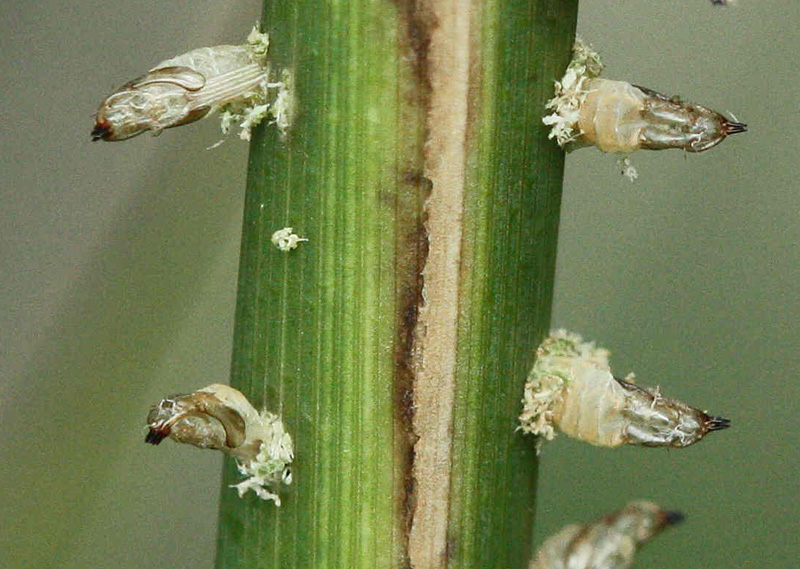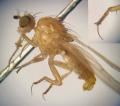Diptera.info :: Identification queries :: Diptera (eggs, larvae, pupae)
|
Diptera in reed stem?
|
|
| jck |
Posted on 24-12-2012 08:29
|
|
Member Location: Posts: 1131 Joined: 21.08.12 |
Can anyone help with this? To be honest I don't know if these are flies or something else. There were 7 in total coming out of a Phragmites stem. This is not a reedbed, just a few plants at the edge of a broad ditch between fields and mixed woodland. Apeldoorn, province of Gelderland, the Netherlands, 11 August, 2012. James jck attached the following image:  [189.24Kb] |
|
|
|
| atylotus |
Posted on 24-12-2012 10:57
|
|
Member Location: Amsterdam, NL Posts: 1166 Joined: 29.05.09 |
I think it is more like the pupa of a lepidoptera (hawkmoth, fam. Noctuidae), some reed borer species like Archanara, Lenisa, Arenostola, Rhizedra or any other species living in Phragmites. Not an expert in this. As I guess you're a Dutchmen check www.vlindernet.nl for more info Edited by atylotus on 24-12-2012 11:07 |
|
|
|
| jck |
Posted on 24-12-2012 14:46
|
|
Member Location: Posts: 1131 Joined: 21.08.12 |
Thanks for your reply - I'd be a bit surprised if this was Lepidoptera as they don't (as far as I know) live communally inside reed. However, I have just come across a a species of fly which may be responsible: Giraudiella inclusa. Is this a reasonable option? James |
|
|
|
| atylotus |
Posted on 24-12-2012 16:30
|
|
Member Location: Amsterdam, NL Posts: 1166 Joined: 29.05.09 |
At first sight I immediately thought of some Dolichopodidae (Thrypticus sp), but as I was not familiar with this too, the second change was some kind of Hawkmoth, which also lives inside reed. Check this http://www.cabi.o...y_sma.html |
|
|
|
| jck |
Posted on 24-12-2012 19:06
|
|
Member Location: Posts: 1131 Joined: 21.08.12 |
Very interesting link - thanks - although I haven't seen a photo that really resembles mine. I think we can rule out Hawkmoths - the Sphingidae are just far too big. Whatever it is, it seems to have very strong jaws. I tried the photo on Waarneming.nl - category Insekten Overige - but there were no suggestions at all. James |
|
|
|
| atylotus |
Posted on 24-12-2012 22:46
|
|
Member Location: Amsterdam, NL Posts: 1166 Joined: 29.05.09 |
James If you mean these blackish protrusions, they are positioned on top of the head and are not functional mandibels/jaws. pupae do not have those. But looking at it they probably have some piercing function. I think they are called frontal horns or perhaps cephalic tubercles. Ton |
|
|
|
| atylotus |
Posted on 24-12-2012 22:57
|
|
Member Location: Amsterdam, NL Posts: 1166 Joined: 29.05.09 |
http://www.dipter...d_id=29911 I named these Dolichopodidae, but forummembers thought otherwise Ton |
|
|
|
| jck |
Posted on 24-12-2012 23:53
|
|
Member Location: Posts: 1131 Joined: 21.08.12 |
Many thanks for the info - this goes far beyond my limited knowledge at the moment. Prettige Kerstdagen/Merry Christmas, James |
|
|
|
| Jump to Forum: |












